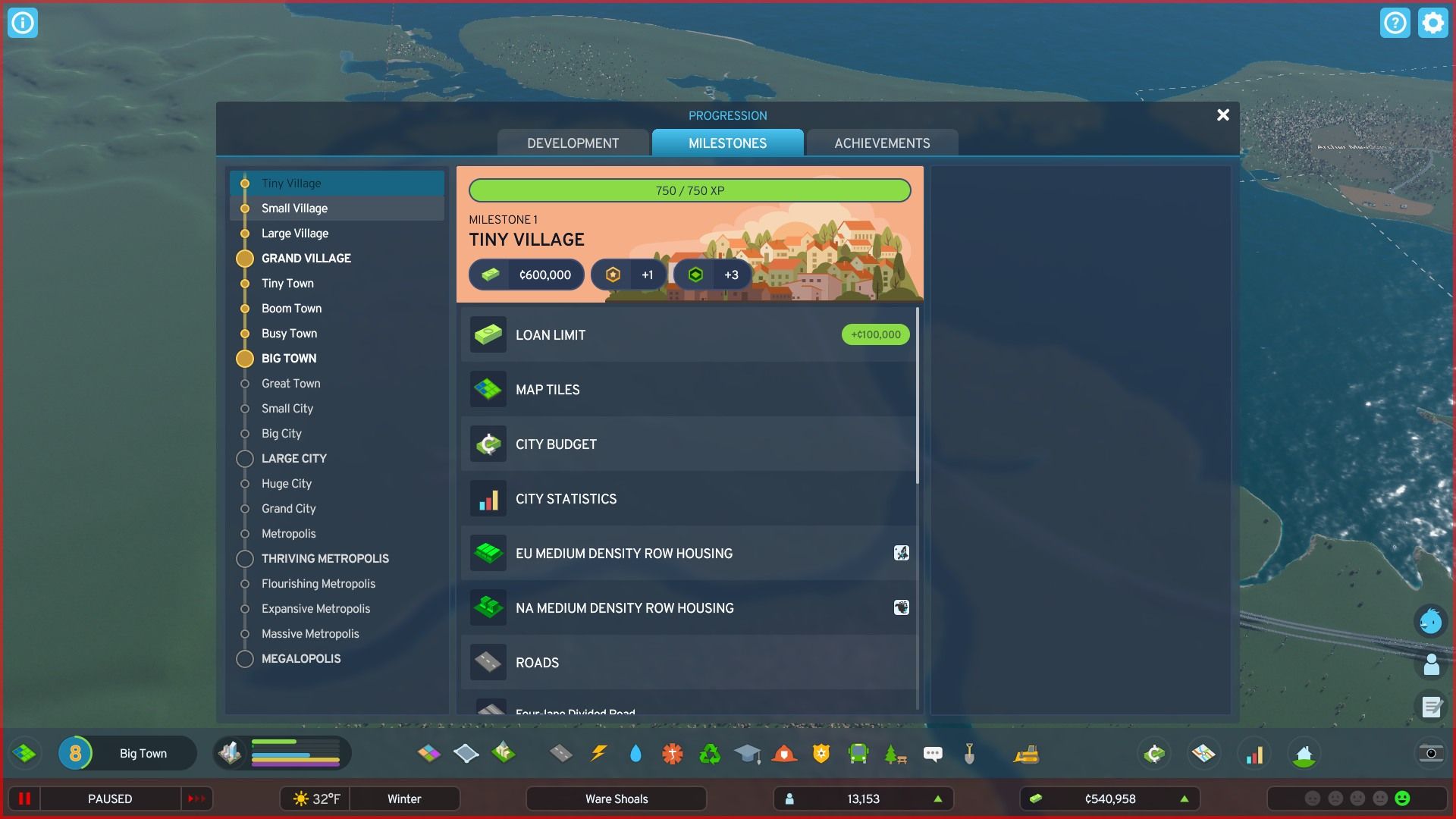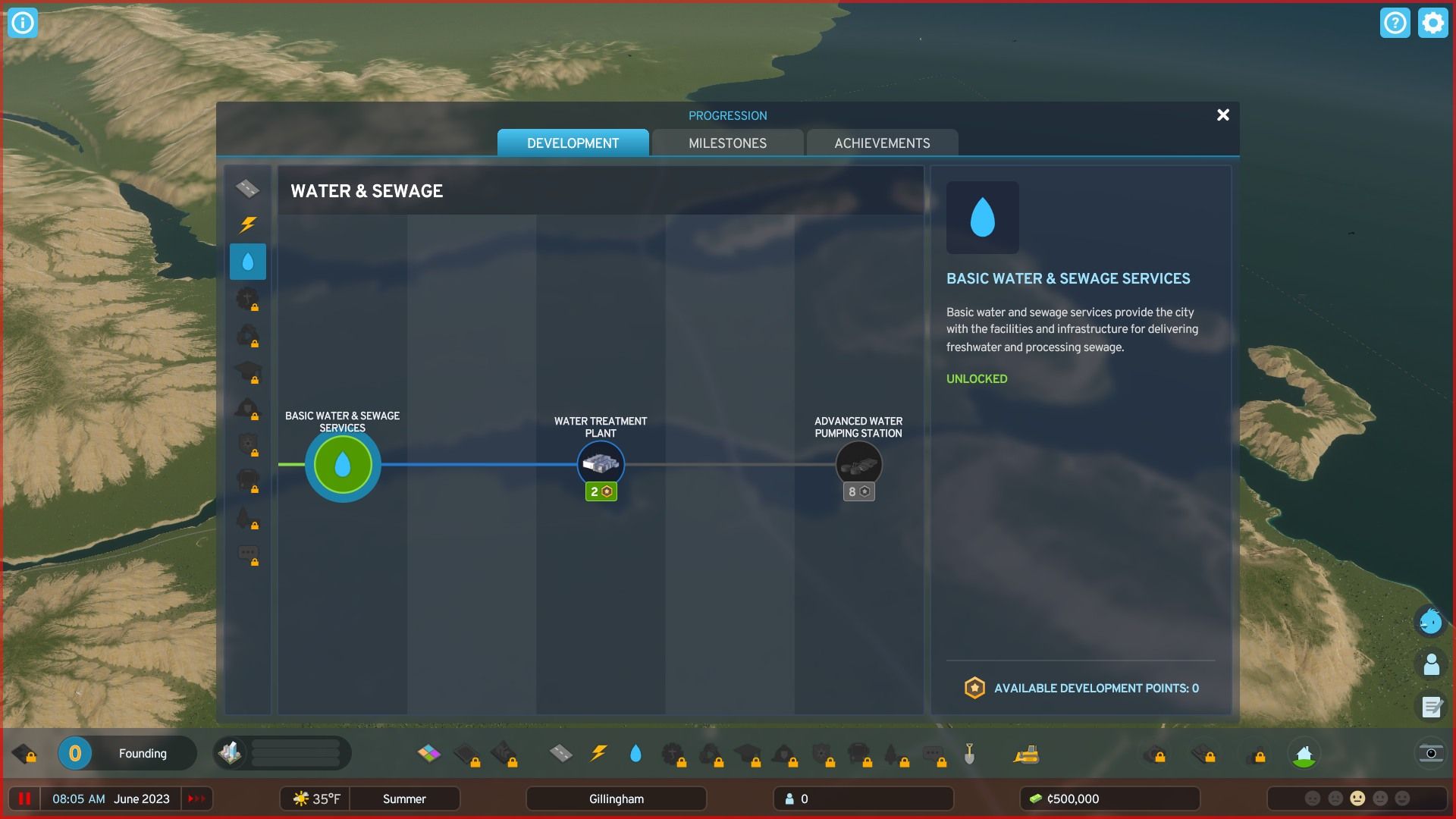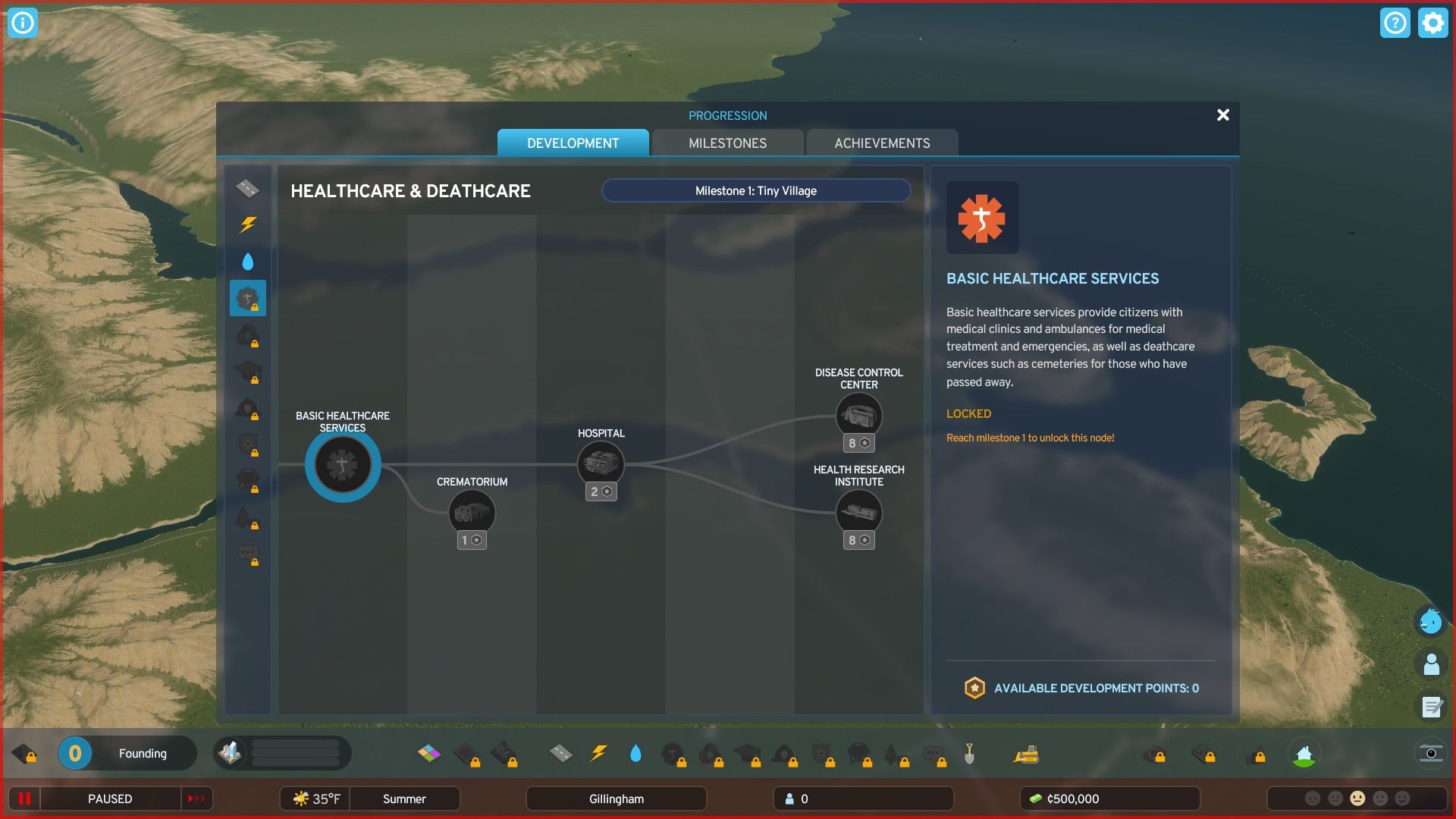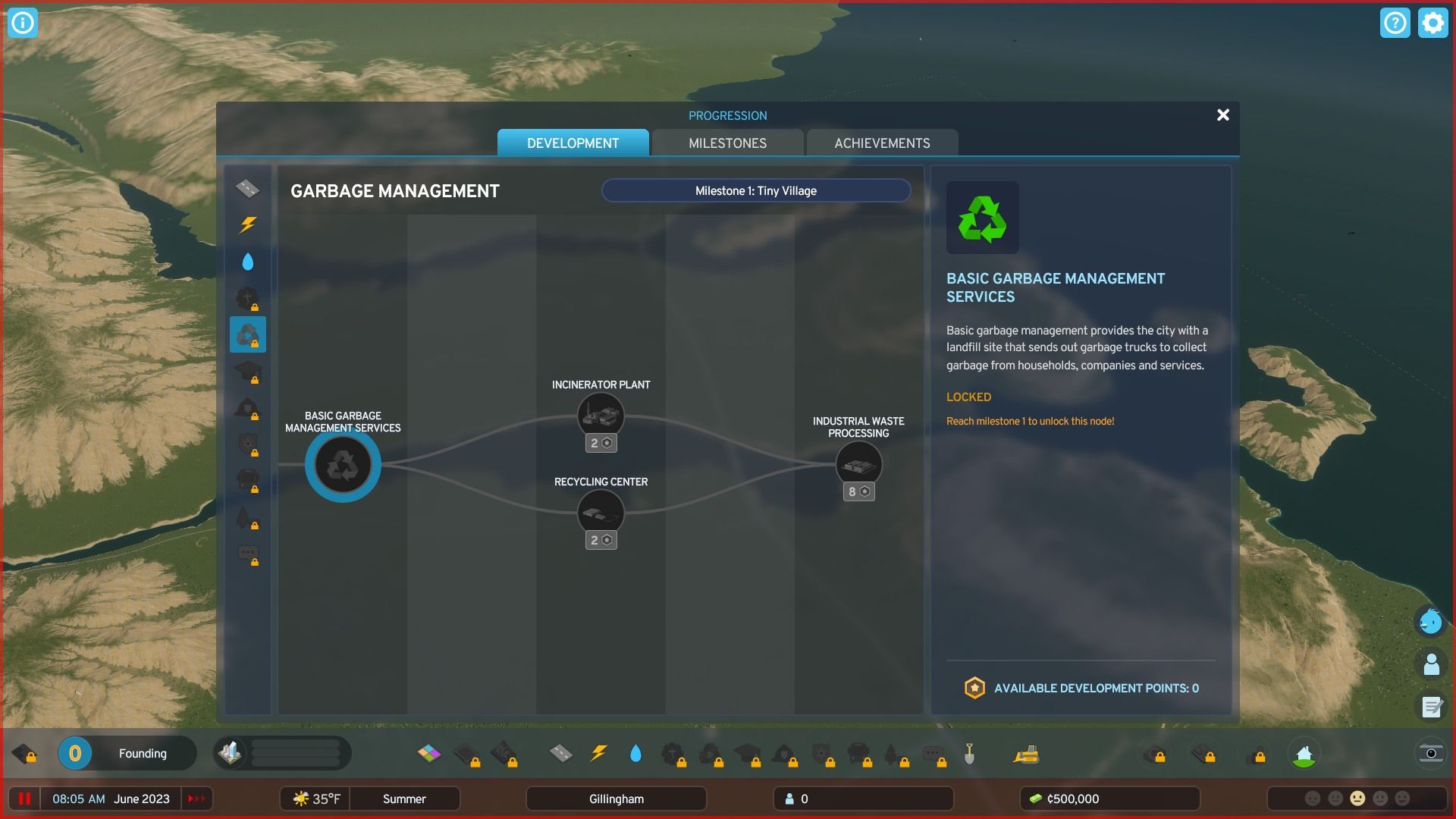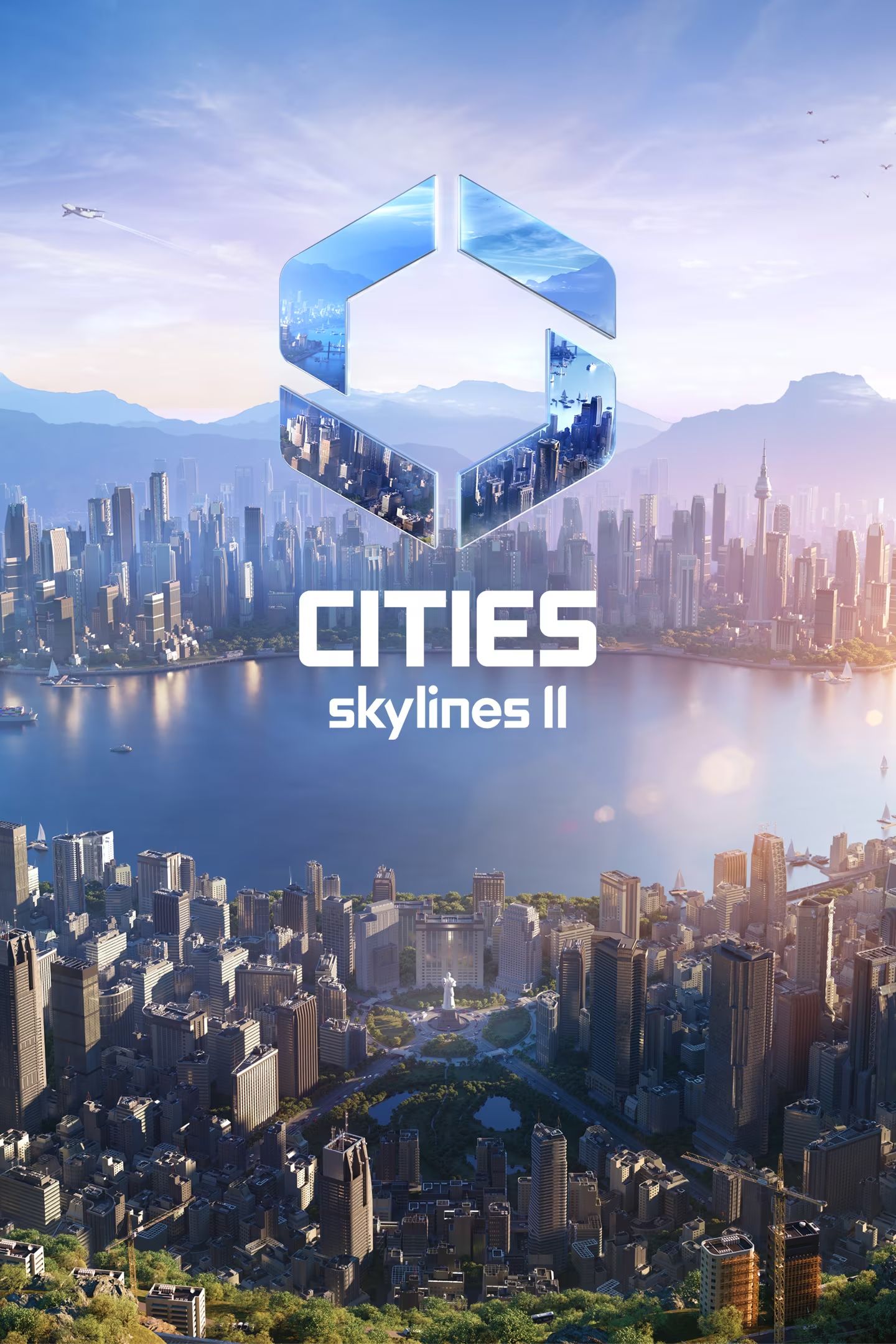
Cities: Skylines 2 - A Comprehensive Guide to Development Trees and Optimal Initial Purchases

The development tree in Cities: Skylines 2 is a game-changer, allowing players to strategically choose upgrades Make smart decisions to create a thriving city, as the wrong choices can make the game more challenging Master the economy, utilities, services, and transportation to build the perfect metropolis!
In the original Cities: Skylines game, players would unlock all civic services and buildings by reaching population milestones. However, in Cities: Skylines 2, the system has been revamped. Instead of unlocking everything for free, players now receive development points through milestones, which they can use to unlock advanced buildings.
However, not all advanced buildings and services hold the same level of importance. Development points are scarce at the beginning of the game, so players may unknowingly make their Cities: Skylines 2 experience more difficult by choosing unnecessary buildings over crucial ones. For this reason, this guide will provide a list of each development tree and highlight the most important items within them.
The Development Point Economy
Each milestone on the milestone list is represented by an orange hex symbol, indicating a development point. Additionally, they are accompanied by green hex land permits. As the milestones progress, the number of development points and land permits increases.
Milestone | Development Points |
|---|---|
Tiny Village | 1 |
Small Village | 2 |
Large Village | 3 |
Grand Village | 4 |
Tiny Town | 5 |
Boom Town | 6 |
Busy Town | 7 |
Big Town | 8 |
Great Town | 9 |
Small City | 10 |
Big City | 11 |
Large City | 12 |
Huge City | 13 |
Grand City | 14 |
Metropolis | 15 |
Thriving Metropolis | 17 |
Flourishing Metropolis | 19 |
Expansive Metropolis | 21 |
Massive Metropolis | 25 |
Megalopolis | 30 |
Total | 232 |
The number of development points players need to buy every upgrade is 228.
Roads
Roads, electricity, and water and sewage all start unlocked as the game begins, but players will need to reach the first milestone to get any points to spend on them.
In the game Cities: Skylines 2, focusing on the traffic simulation aspect is crucial. Players should prioritize investing points in the traffic tree early and frequently. Two key elements to prioritize are Advanced Road Services and Large Roads, as they provide additional tools for adjusting roads and intersections to accommodate the city's growth. It is also important to unlock the road maintenance building by investing in Advanced Road Services. While roundabouts can be helpful, the smallest one is already available for free at the beginning of the game.
As players progress and unlock medium and high-density zones, Parking Areas can be useful. However, Intersections and the Grand Bridge can be put on the backburner. Intersections are pre-designed road and highway intersections that utilize the same road tools players already have access to. The Grand Bridge, on the other hand, simply transforms a regular bridge into a tourist attraction.
Electricity
In order to truly thrive, a modern city relies heavily on electricity. At the beginning of the game, players are provided with a small coal plant and wind turbines, which generate sufficient power to kickstart the city. However, as the game progresses, it becomes necessary to upgrade to a more efficient power source.
The optimal choice for this upgrade is a gas power plant. Not only does a natural gas power plant emit slightly fewer pollutants compared to a coal plant, but it also offers a dependable and self-sustaining power supply that can carry a city through the midgame. It is crucial to connect the plant to external power lines in order to export any surplus power that is not required.
Depending on the map, renewable energy plants can also offer reliability without the need for resource shipments that could congest the roads. However, their development requires a slightly higher investment of development points as players must first purchase the Emergency Battery Station and also possess knowledge of the map for optimal placement. Conversely, the gas power plant has the advantage of being able to be located anywhere that is situated downwind of the main city.
Water and Sewage
There is little room for improvement in the water and sewage system. The water treatment plant effectively reduces the pollution caused by the city's sewage system. However, this pollution will only become a significant issue later in the game, especially if players have strategically placed their sewage outlets. The Advanced Water Pumping Station offers a more efficient method of accessing water reservoirs, but it is not a necessity if the map provides access to open water.
Healthcare and Deathcare
Garbage Management
Unlocking healthcare, deathcare, and garbage management is a crucial milestone for players. Upon reaching this milestone, players gain access to clinics and cemeteries free of charge. Investing in this development tree is highly recommended. Unlike cemeteries, crematoriums have unlimited capacity, and the hospital actively enhances the overall health of the city, whereas clinics can only maintain it at approximately 60 percent.
The landfill serves as the primary waste management facility, excelling in storage capabilities rather than waste processing. In order to completely eliminate garbage, players need to purchase the Incinerator Plant. While the Recycling Center aids in waste reduction and generates a modest income to fund garbage management, its capacity for processing and storage is significantly lower compared to the landfill and incinerator.
Education and Research
In Cities: Skylines 2, education continues to play a crucial role, albeit with some key differences compared to the first game. The wealth levels of households and businesses partially determine building upgrades, with education being one factor. However, the demand for medium and high-density housing is heavily reliant on a substantial student population.
Upon reaching milestone two, players gain free access to elementary and high schools, but additional educational facilities require the expenditure of development points. The college and the university are the most vital structures to acquire, as they enable citizens to attain the highest education levels, resulting in improved building upgrades and heightened demand for high-density housing.
The naming convention in the game may be confusing for American players. In the game, "college" refers to a two-year community college, while a university grants bachelor's degrees and higher. In order to complete their education in Cities: Skylines 2, citizens are required to visit both types of institutions.
The two specialist universities have a similar function to the regular university, but they are more expensive and offer unique city-wide bonuses. The Technical University benefits industrial and office zones, while the Medical University focuses on healthcare. Additionally, the advanced buildings in this tree enhance city statistics, although they do not offer direct services.
Fire and Rescue
The only building that is available for free in the Fire and Rescue tree is the basic fire house. While a fire house assists in extinguishing fires, the most effective way to minimize the risk of fires is by investing in a Fire Station.
Obtaining the Small Emergency Shelter early on is also highly beneficial, particularly since natural disasters become accessible at milestone four. By having an emergency shelter within its vicinity, lives of citizens can be saved, thus mitigating the potential impact of a natural disaster on the city.
The effectiveness of the Firewatch Tower and Firefighting Helicopter Depot varies depending on the geographical features depicted on the map. A map that exhibits extensive forests and extensive urban areas overlapping with them will necessitate a greater level of forest fire protection compared to a map predominantly comprised of open grasslands.
Police and Administration
To begin, this service focuses solely on basic police stations. However, it is worth considering an early investment in the Welfare Office, as just placing one or two can significantly reduce crime even without extensive police coverage. Nevertheless, similar to healthcare, citizens will continue to voice concerns about crime until players acquire and position a Police Headquarters building.
The other administrative buildings are primarily beneficial to players who are experiencing a significant deficit due to service imports and loan payments. Similarly, the Prison and Central Intelligence Bureau have limited value for players who already possess adequate police coverage.
Transportation
Investing in transportation is highly beneficial, just like investing in the Roads tree. While players receive buses for free, they need to unlock all other means of transportation. The subway is particularly valuable for efficiently moving citizens within the city, bypassing traffic congestion on the roads. Additionally, a well-developed train or water system ensures the efficient transportation of goods to commercial and industrial areas, reducing the reliance on trucks.
Parks and Recreation
Communications
Parks may not be a necessity for citizens, but they undeniably increase property values and have the potential to attract tourists. The vital Park Maintenance building plays a crucial role in ensuring the upkeep of all the parks in the city. Players can then choose between Large Parks or Sports Parks based on their preference, both of which cover a larger area and contribute significantly to the overall well-being compared to the small parks that are unlocked without any cost.
This particular tree can be disregarded by players for a certain amount of time. It provides essential services such as a post office, public post boxes, and a communications tower. By strategically placing post boxes and towers, players can keep their citizens content for an extended period.
So to sum it all up, the buildings and upgrades players should always prioritize are:
Advanced Road Services
Large Roads
Roundabouts
Gas Power Plant
Hospital
Crematorium
Incinerator Plant
College
University
Small Emergency Shelter
Fire Station
Welfare Office
Police Headquarters
Train
Tram
Subway
Park Maintenance
Large Parks or Sports Parks
Players can eventually buy every upgrade, but getting these first will make playing the game much easier.
Cities: Skylines 2 is available now on PC, PS5, and Xbox Series X/S.
Cities: Skylines 2
Platform(s) PC, PS5, Xbox Series X, Xbox Series SReleased October 24, 2023Developer(s) Colossal OrderPublisher(s) Paradox InteractiveGenre(s) City Builder
Editor's P/S
As an enthusiastic fan of Cities: Skylines, I am thrilled about the introduction of the development tree in the upcoming sequel. This new feature adds depth and strategy to the city-building experience, allowing players to make crucial decisions that shape the growth and prosperity of their cities. The fact that not all advanced buildings and services hold the same level of importance creates a sense of challenge and encourages players to carefully consider their choices. The scarcity of development points at the beginning of the game adds to the excitement, as players must prioritize their investments wisely to create a thriving metropolis.
The revamped system of unlocking advanced buildings through development points is a significant improvement over the previous system of reaching population milestones. This change gives players more control over the development of their cities and allows them to tailor their choices to their specific needs and goals. The inclusion of green hex land permits alongside development points adds an additional layer of strategy, as players must balance the acquisition of new land with the development of their existing city.
